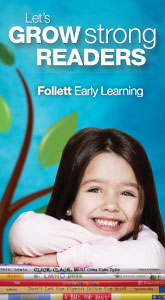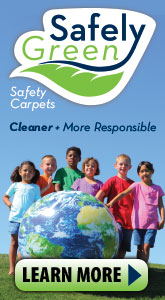ExchangeEveryDay Past Issues
 << Previous Issue
| View Past Issues | | Next Issue >>
<< Previous Issue
| View Past Issues | | Next Issue >> -Eudora Welty
In her Exchange article (May/June 2012), "Belonging," Ruth Wilson talks about the alarming number of preschoolers being expelled from early learning programs:
"While there are certainly many reasons why young children are having such severe behavioral issues as to warrant expulsion from school, one explanation is that their belonging needs are not being met. This tends to happen when the structure of a program suggests that, in order to belong, a child must conform to a pre-determined set of rules and expectations. These rules and expectations, in some cases, are not appropriate for young children — as in the recent trend to have preschoolers meet academic standards, which are more suitable for older children. In other cases, pre-determined rules and expectations may not reflect understanding and respect for an individual child’s culture and background experiences. This mismatch can also tell the child that he or she doesn’t belong....
"So what are we to do to help all children feel that they belong in our early learning centers? The first thing to keep in mind is that we need to engage the help of children. We need peers telling each other (through words and actions), 'You belong; you’re a part of the group.' We need children with the dispositions and skills to act against prejudice and/or discrimination, to recognize unfairness, to appreciate human diversity, and to understand and respect that all children have rights. One of these rights is the right to belong."
Free Shipping for Two Days Only!
 Facing the Challenge is an instructional, interactive DVD set for teachers working with young children with challenging behaviors. The program includes over two hours of training and documentary video designed to help teachers learn how to prevent children's use of difficult behaviors and how to develop intervention strategies to work with children who use challenging behaviors to meet their needs.
Facing the Challenge is an instructional, interactive DVD set for teachers working with young children with challenging behaviors. The program includes over two hours of training and documentary video designed to help teachers learn how to prevent children's use of difficult behaviors and how to develop intervention strategies to work with children who use challenging behaviors to meet their needs.
For the next two days only, get FREE SHIPPING on this title!
(Sale ends 11:59 PST 9/4/2014)




Comments (8)
Displaying All 8 CommentsUnited States
I am very proud that Head Start just never expels but sometimes admits kids who have been expelled from every other place.
Community Action Project of Tulsa Head Start
Tulsa, OK, United States
I was in agreement with the article until at the end where it says the first thing to do is engage the help of the children. I am guessing there is an implied understanding that there is already an adult who understands the importance of feeling as if they belong, if that was the norm, there would be no reason for this article! We need to acknowledge that most teachers in the field, and certainly the people that are funding our programs, don't understand the foundation to ALL learning is within healthy relationships with each other! The templates we will use to navigate the world for the rest of our lives are developed by the age of three. What those templates look like depends solely on the types of connections and attachments they have during those years. If a child is consistently given the message they don't belong during pre-school, you can pretty much guarantee there will be issues for the rest of their lives in their self-regulation skills and future relationships. Until we advocate to policy makers to back off on the academics and let us focus on nurturing the child’s ability to create healthy attachments, I fear we will always be stuck in the false belief that exposing children to academics earlier and earlier is what makes them smart. It isn't. When a child feels safe and connected they can learn, when they feel unsafe and not connected they react. If we are expelling children in early childhood settings at such an alarming rate, what does this tell us...we have work to do on the adults!
ece consultant
Dallas, TX, United States
Until the educational, research-validated concept of 'children learn through play' is accepted nationally, and testing corporations get out of business in early childhood classrooms, we are challenged. Children feel they belong when their developmental needs are met through having many choices in the classroom setting, with learning materials, being in different kinds of social groups from pairings to small and large groups. They are partners in learning with the adults and children in the classroom, and when that concept is implemented in our daycares and preschools and kindergartens nationwide, then children will feel like they belong!
retired
Houston , TX, United States
Some children endanger other children and really and truly cannot belong. Such children, or more frequently their parents, fail to get the message until the child has been excluded. My son was removed from two child care centers, two vacation Bible schools, and his private kindergarten as well as a YMCA day camp.
His fault? No. Mine.
Finally I obtained help for him. For parents in denial, this can be the step that forces them to get the help that may save the child.
Today? Oh, he is a successful accountant.
Design4Kids
Milwaukee, Wisconsin, United States
Thanks again Ruth Wilson!
United States
Our school is very culturally diverse, as is our staff. We work together with parents and other public and private agencies to find ways to help children with different languages, from different life experiences, and with different skill levels interact and learn together. It is challenging sometimes but mostly doable. However, we struggle with the same problem I imagine confronts every program working with any age child; at what point do you draw the line for what can be dealt with in your classrooms? If a child's needs are such that they consistently demand the attention of staff, to the point where the other children in the class' needs are being neglected then I feel, for all the children's sake, another avenue must be explored for the special needs child. We have been able to work through some problems like this with help from outside agencies but only if the parents involved were cooperative and proactive on their child's behalf. Without parent cooperation, unfortunately expulsion has occasionally been a necessity.
Louisville, CO, United States
For me, this article is right on point with regards to an inclusive environment. I believe that if the adults who interact with children are modeling fairness to all,then the children will naturally respond in kind when faced with diversity, particular diverse behaviors. While all situations cannot - and should not - be handled in the exact same way, I feel that when children see teachers helping their classmates during moments of challenge, we are sending the message that we will be there for anyone who needs us, in whatever way they need us. I have seen the results of this approach in my classrooms over the thirty-plus years I have taught young children and acceptance has always prevailed.
CSBC
Denver, United States
I am not sure I agree with this article. I don't think it's appropriate to place the responsibility of inclusion onto the children. Children, after all, reflect the prejudices and discrimination they experience from and that are modeled by adults. The first negative experience my children had because of their diversity (they are biracial) was from other children. I think it's the responsibility of the program to create an environment where inclusion is accepted, and exclusion is not. This means eliminating competition, providing activities and experiences where every child, regardless of their background, can succeed, and having a diverse staff. To me one of the biggest examples of lack of inclusion in early childhood programs is the absence of men in our programs. It is not coincidental that the majority of children excluded from programs are boys.
Post a Comment